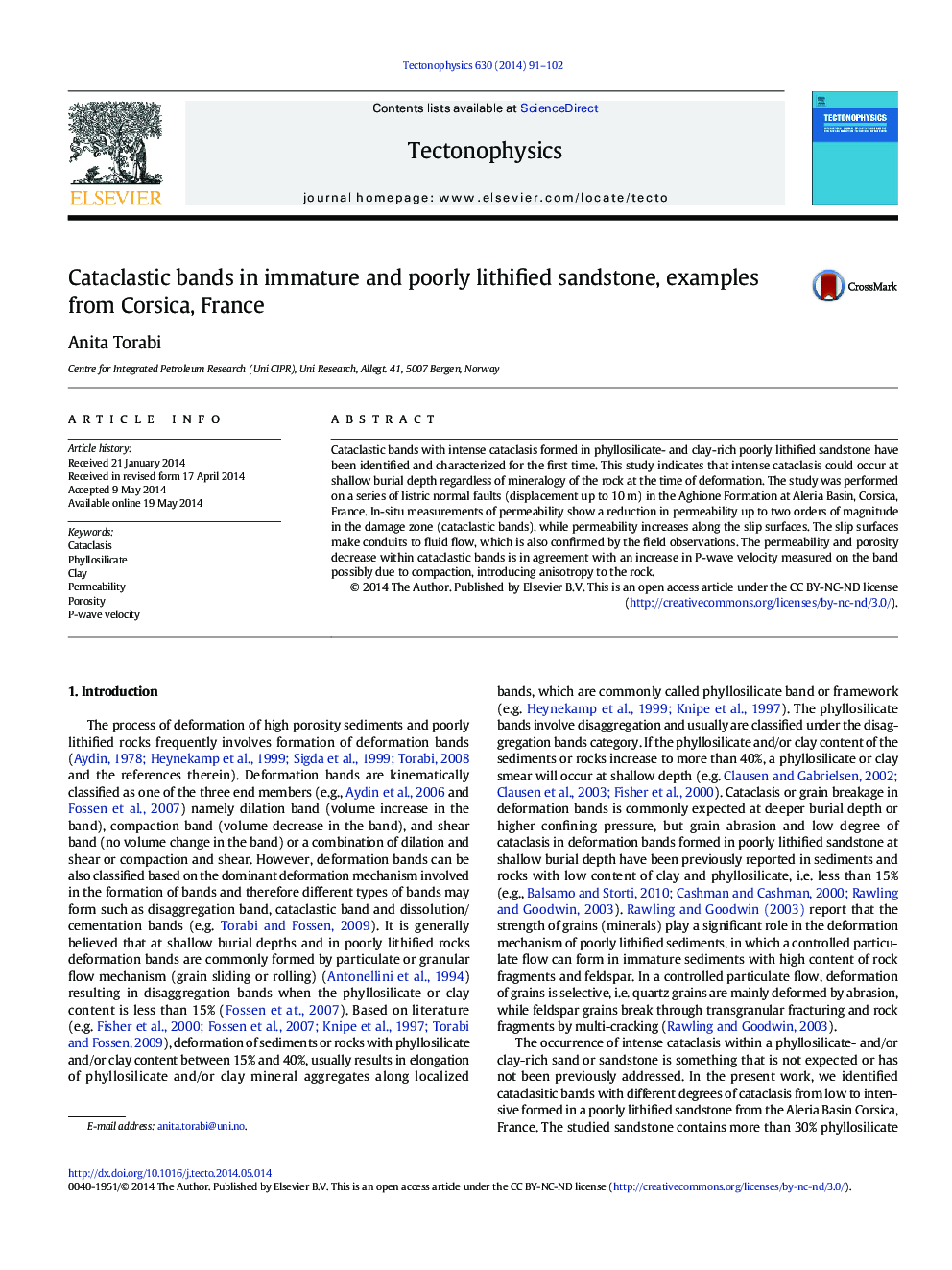| Article ID | Journal | Published Year | Pages | File Type |
|---|---|---|---|---|
| 6433679 | Tectonophysics | 2014 | 12 Pages |
â¢Cataclastic bands in phyllosilicate- and clay-rich poorly lithified sandstoneâ¢Intense cataclasis at shallow burial depth regardless of mineralogy of the rockâ¢Cataclastic bands introduce anisotropy to the sandstone samples.â¢P-wave velocity varies in different orientations on the same band.
Cataclastic bands with intense cataclasis formed in phyllosilicate- and clay-rich poorly lithified sandstone have been identified and characterized for the first time. This study indicates that intense cataclasis could occur at shallow burial depth regardless of mineralogy of the rock at the time of deformation. The study was performed on a series of listric normal faults (displacement up to 10Â m) in the Aghione Formation at Aleria Basin, Corsica, France. In-situ measurements of permeability show a reduction in permeability up to two orders of magnitude in the damage zone (cataclastic bands), while permeability increases along the slip surfaces. The slip surfaces make conduits to fluid flow, which is also confirmed by the field observations. The permeability and porosity decrease within cataclastic bands is in agreement with an increase in P-wave velocity measured on the band possibly due to compaction, introducing anisotropy to the rock.
